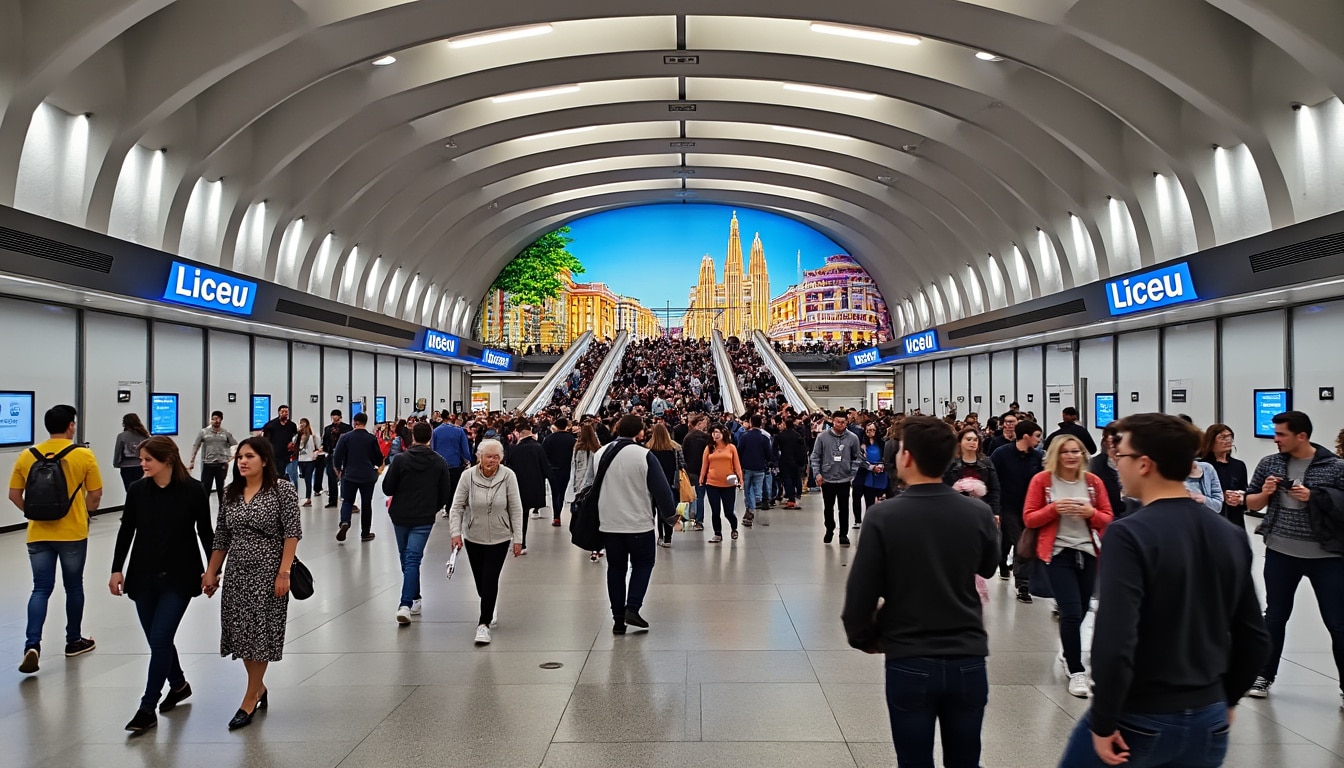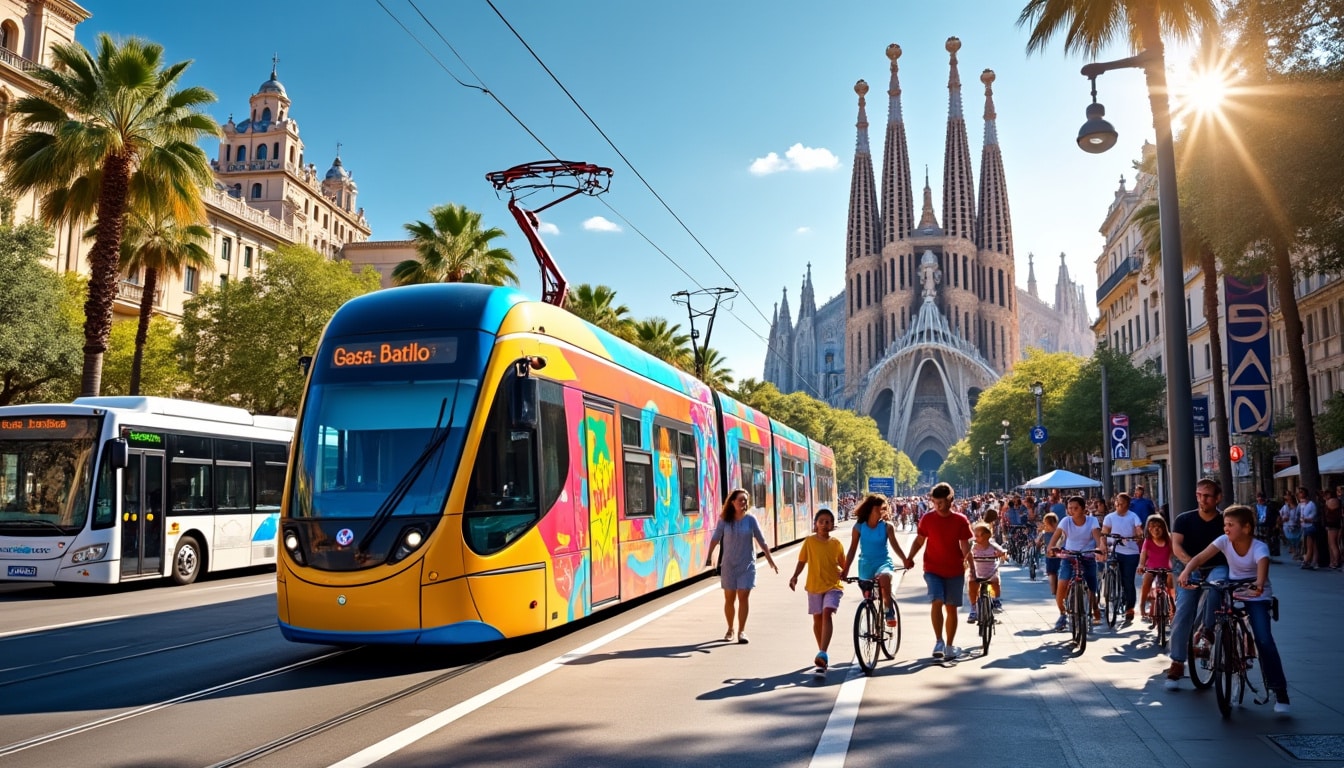Barcelona is a city that thrives on its vibrant culture, stunning architecture, and bustling streets. With an ever-increasing number of tourists and locals traversing its avenues, the public transport system plays a pivotal role in ensuring accessibility and convenience. Whether it’s the iconic TMB network or the sleek Tramvia, Barcelona offers myriad options for getting around efficiently. Here, we’ll explore the key features, benefits, and insider tips for navigating this Catalan metropolis with ease.
Barcelona Metro: The Lifeline of the City
The Barcelona Metro is undoubtedly the heartbeat of the city’s public transport system. Operated by Transports Metropolitans de Barcelona (TMB), it comprises a comprehensive network of lines that cater to both tourists and locals. The metro is favored for its extensive reach and punctuality, making it a reliable mode of transport. Visitors can download the Barcelona metro map online, featuring all lines and stops.
A standout feature of the Barcelona Metro is its commitment to sustainability. As part of the city’s initiative to reduce carbon emissions, the metro runs mostly on clean energy, providing passengers with an eco-friendly travel option. Additionally, trains arrive frequently, typically every few minutes, ensuring that you’re never left waiting long.
The Metro network consists of various lines, each distinguished by a different color and number. Some notable lines include:
- 🚇 L1 (Red Line): Connecting Hospital de Bellvitge to Fondo, it crosses the city center and provides access to key landmarks like Plaça de Catalunya.
- 🚇 L3 (Green Line): Known for connecting vibrant neighborhoods, it runs from Trinitat Nova to Zona Universitària.
- 🚇 L9 (Orange Line): Divided into North and South sections, it links Barcelona Airport to the city, making it an essential line for travelers.
When planning your journey, it’s crucial to be aware of the metro’s operating hours, typically from 5 AM to midnight, with extended services on weekends. Ticket prices are affordable, with options for single rides, day passes, or the popular T-Casual card that allows for multiple journeys.

The Modern and Efficient Tramvia Network
Complementing the metro, the Tramvia (tram) network runs along street-level tracks, providing an alternative means of transport. The trams are particularly useful for reaching areas not directly accessible by metro, like the city’s peripheries. Their integration with the metro and bus systems allows seamless connectivity across the city.
The Tramvia lines, known for their smooth and quiet operation, run along major thoroughfares and scenic routes. Notable lines include:
- 🚋 T1: Reaching key business districts and popular shopping centers.
- 🚋 T3: Offering stunning views of the coastal areas.
Tram tickets can be purchased at tram stops, and fare prices are aligned with the metro and buses, making it easy to switch between transport modes. Their frequent service, along with accessibility features for people with disabilities, makes the Tramvia a preferred choice for many.
TMB Bus Network: Connecting Every Corner
The TMB bus network in Barcelona complements the metro and tram services, offering extensive routes throughout the city. Ideal for reaching destinations not covered by other forms of public transport, the buses are a practical choice for short and scenic trips.
Buses in Barcelona are known for their modernity and comfort, boasting air-conditioning and free Wi-Fi. They cover over 200 routes, ensuring no part of the city is left unexplored. Some key features of the TMB bus network include:
- 🚌 High-frequency service, especially during peak hours.
- 🚌 Night buses, known as NitBus, providing transport options after the metro and regular buses have stopped operating.
- 🚌 Tourist-friendly services like the Bus Turístic, which offers hop-on-hop-off stops at major attractions.
Purchasing bus tickets can be done with ease at metro stations or directly on the bus using contactless payment options. The integrated ticketing system ensures that a single ticket can be used across different modes of public transport like the metro, tram, and bus services.
Exploring with the Bus Turístic
The Bus Turístic service is an excellent way for visitors to explore Barcelona’s renowned sites without the hassle of navigating public transport on their own. This service offers various routes covering all major attractions, allowing passengers to hop on and off as desired while exploring the city’s rich history and culture.
The Bus Turístic is a double-decker, open-top bus, ideal for sightseeing and taking in panoramic views. Routes include stops at famed destinations such as the Sagrada Família, Park Güell, and the Gothic Quarter.
Sustainable Choices: Bicing and Bike Rentals
In recent years, Barcelona has enhanced its commitment to sustainability by introducing extensive bike lanes and promoting the benefits of cycling. Bicing, the city’s public bike hire scheme, is immensely popular among both locals and tourists.
Bicing bikes are conveniently stationed throughout the city, allowing users to pick up and drop off bikes at different locations. Memberships can be availed for both short-term visitors and long-term residents, offering a flexible and eco-friendly transport solution.
Bicycles in Barcelona can be rented from numerous services, with pricing dependent on rental hours or days. Popular bike rental options include:
- 🚲 Vibnt: Known for electric bike rentals offering coverage across the city’s hilly areas.
- 🚲 Mobike: Provides a handy app for locating available bikes and managing rentals seamlessly.
With over 200 kilometers of dedicated bike lanes, there are countless scenic routes to explore, whether you’re exploring the city’s beach promenades or its lush parks. For those new to cycling in Barcelona, safety tips are readily available to ensure a safe and enjoyable experience.
Barcelona’s Airport and Intercity Connections
Barcelona is served by multiple airports, with El Prat being the main international gateway. Quick and efficient airport transport options ensure a seamless journey from the terminals to the city’s heart.
Key airport transport services include:
- ✈️ Aerobus: An express bus service offering direct connections to Plaça de Catalunya.
- 🚆 Renfe Train: Linking Terminal 2 to various metro and train stations in Barcelona.
- 🚖 Taxis: Readily available from the airport, providing a more personalized travel experience.
Besides the airport connections, Barcelona’s intercity links are impressive, with services like the Renfe trains and high-speed AVE connecting to cities such as Madrid. Popular stations like Barcelona Sants and Estació de França serve as central hubs for long-distance travel, equipped with modern amenities for passenger convenience.
For travelers planning their visit, taking advantage of travel passes such as the Hola BCN! card can offer unlimited travel options across all public transport services, ensuring both convenience and value for money.
| Transport Option | Services | Key Benefit |
|---|---|---|
| Barcelona Metro | L1, L3, L9N, etc. | Fast and reliable |
| Tramvia | T1, T3 | Scenic routes |
| TMB Buses | Over 200 routes | Extensive coverage |
| Bicing | Bike hire | Eco-friendly |
| Renfe | Intercity travel | Convenient connectivity |
FAQ
- What is the best way to pay for public transport in Barcelona?
- Are taxis readily available in Barcelona?
- Is public transport safe to use at night?
- Can I travel with pets on public transport?
- Are there discounts available for tourists?

